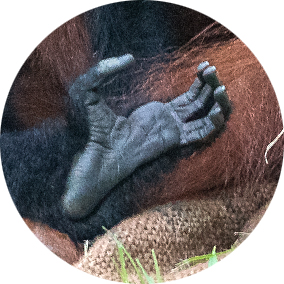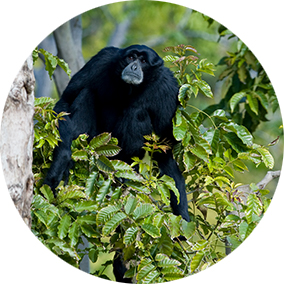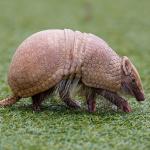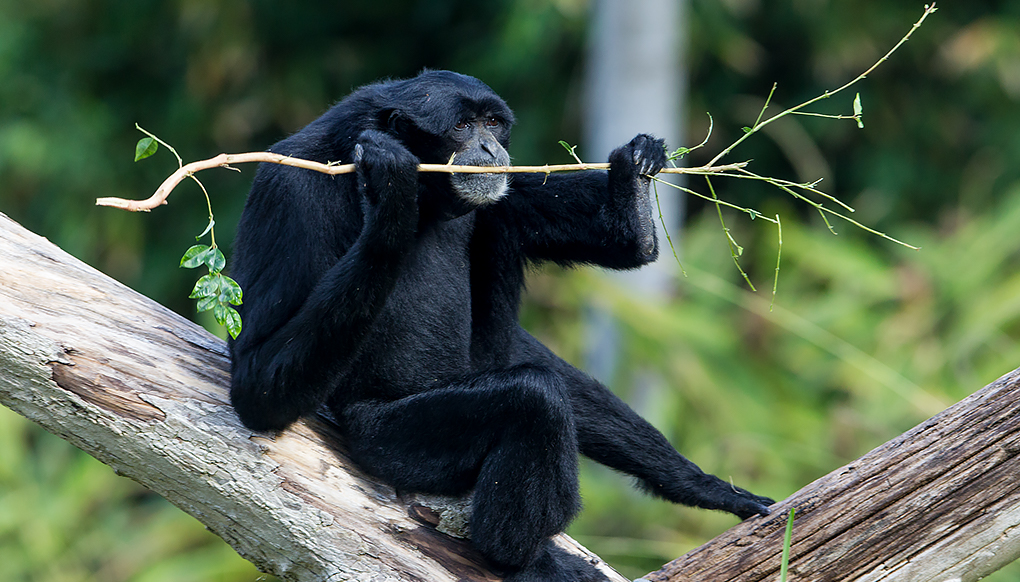
siamang

Mammals


Endangered
facts

About half of what a siamang eats is fruit. The rest is mostly leaves. Sometimes siamangs eat small birds or their eggs, spiders, and insects.

description
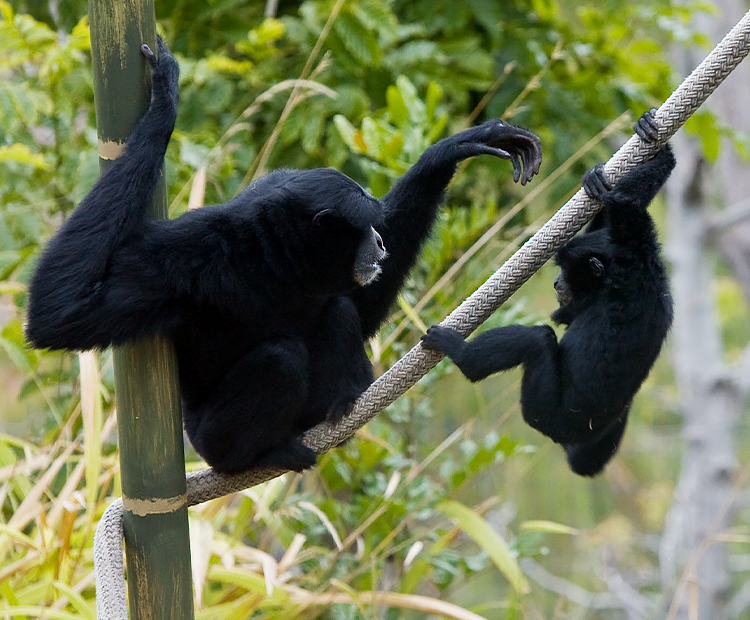
description
Ape or monkey?
Siamangs are at home in the trees, but they aren’t monkeys—they’re apes! How can you tell? Apes never have tails; almost all monkeys do. Siamangs are smaller than great apes (gorillas, orangutans, chimps, and bonobos), so they are sometimes called “lesser” apes.
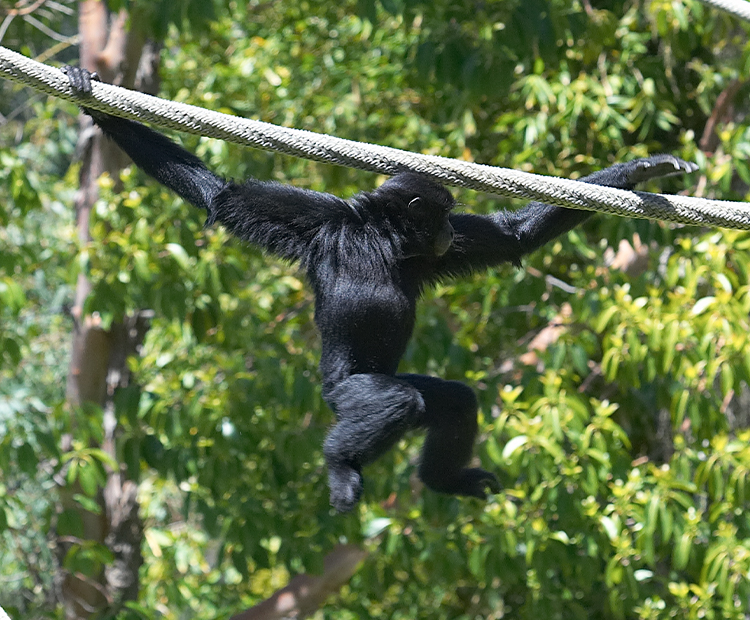
Acrobats
A siamang’s arms are longer than its legs. It travels by swinging through the trees. Hanging from a branch by one hand, it swings its body forward to grab the next handhold. Have you ever tried doing this on a playground? A siamang’s extra-long arms help it travel up to 10 feet in a single swing.
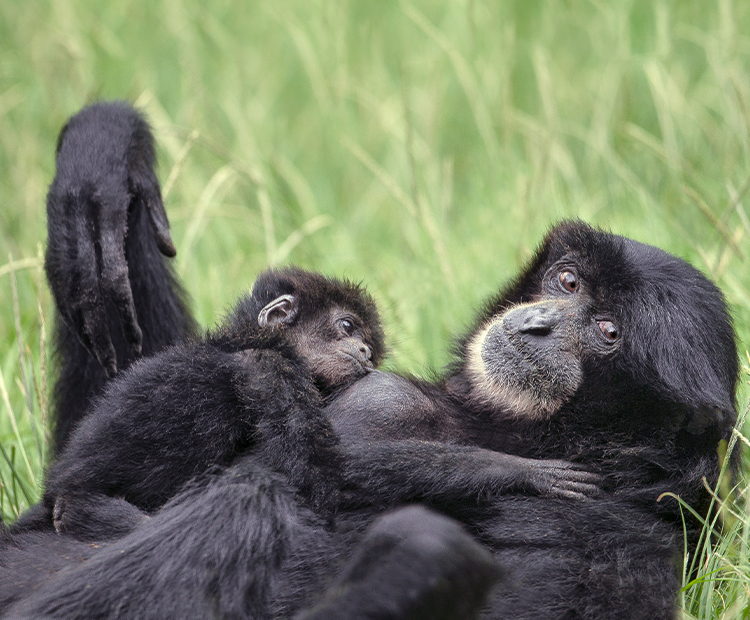
All in the family
A typical siamang family includes mom, dad, and two or three youngsters. Soon after it’s born, a baby can hold onto its mother’s fur and cling to her belly. Siamang fathers help, too. After a baby’s first birthday, dads pretty much take over their care. Siamangs older than about seven go off on their own to find a mate.
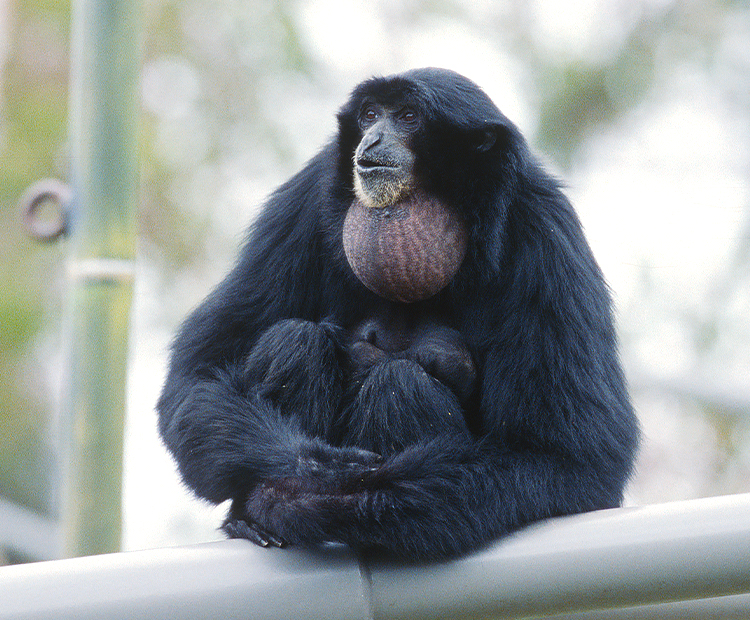
Siamang songs
First thing in the morning, a siamang family starts a territorial hooting that can last 30 minutes. The noisy warning to other siamang families can be heard up to two miles away. Paired males and females also sing to one another. The longer they are together, the more their duet changes.

